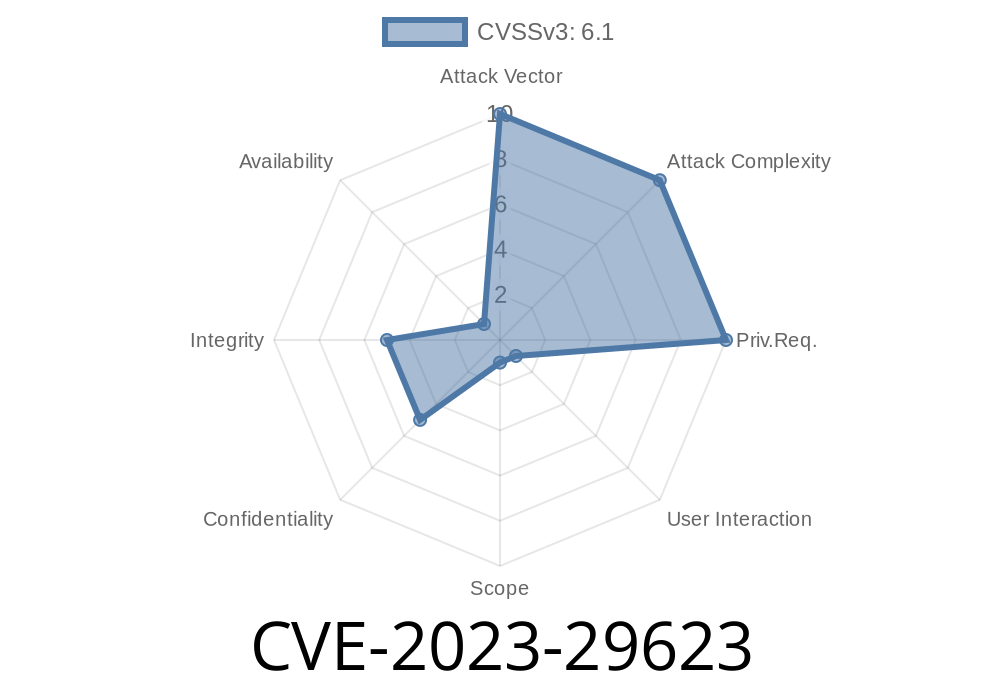One of the most common threats to web security is Cross-Site Scripting (XSS). An XSS attack occurs when an attacker injects malicious scripts into a web application or a user's browser. A vulnerability was discovered in Purchase Order Management v1., exposing its users to potential XSS attacks. This article delves into the details of this vulnerability and provides suggestions on how to mitigate and prevent such risks.
Vulnerability Details
A reflected XSS vulnerability, identified as CVE-2023-29623, exists in Purchase Order Management v1., originating from the password parameter in the /purchase_order/classes/login.php file. The vulnerability allows an attacker to inject and execute arbitrary JavaScript code within the context of the user's browser, potentially obtaining sensitive information, changing site content, or redirecting the user to malicious websites.
Here's a snippet of the vulnerable code within the login.php file
<?php
// ...
$login = mysqli_real_escape_string($connect,$_POST['login']);
$password = mysqli_real_escape_string($connect,$_POST['password']);
// ...
?>
Notice that while the $login variable is sanitized using the mysqli_real_escape_string() function, the $password variable remains vulnerable to XSS attacks.
Exploit Example
To give you a clearer understanding of how this vulnerability can be exploited, consider the following example:
An attacker crafts a URL containing malicious JavaScript code, such as
http://example.com/purchase_order/classes/login.php?password=<script>alert('XSS');</script>;
The attacker then sends this URL to unsuspecting users via email, social media, or other platforms.
3. When the victim clicks on the URL, the malicious JavaScript code is executed in their browser, causing the XSS attack.
Original References
1. CVE Details - CVE-2023-29623 entry at the CVE Details website.
2. Exploit Database - Exploit code and details for CVE-2023-29623.
Mitigation & Prevention
To protect your Purchase Order Management v1. system from the CVE-2023-29623 vulnerability, you should sanitize user input, ensuring that no malicious scripts are allowed to run. Here's a simple fix for the vulnerability:
<?php
// ...
$login = mysqli_real_escape_string($connect,$_POST['login']);
$password = mysqli_real_escape_string($connect,$_POST['password']);
// Add this line to sanitize the password variable
$password = htmlspecialchars($password, ENT_QUOTES, 'UTF-8');
// ...
?>
This code snippet uses the htmlspecialchars() PHP function to convert special characters, such as < and >, to their respective HTML entities, rendering them harmless.
In addition to implementing this fix, you should also adopt best practices for secure web development, including:
Using content security policies (CSP) to restrict the execution of unauthorized JavaScript code.
3. Keeping your software, including your web server, PHP, and database systems, up-to-date with the latest security patches and fixes.
Closing Thoughts
As more and more businesses rely on web applications, ensuring the security of these applications becomes increasingly crucial. By identifying vulnerabilities, like the CVE-2023-29623 XSS vulnerability in Purchase Order Management v1., and applying appropriate mitigation strategies, you can create a safer online environment for both your users and your organization.
Timeline
Published on: 04/14/2023 02:15:00 UTC
Last modified on: 04/20/2023 19:16:00 UTC
